A Collector’s View II: Haven in the heart of Berrima
- Bonita Kemarre Woodman, Catherine Field, Darlene Kemarre Woodman, Denise Ngwarraye Bonney, Julianne Ross Allcorn, Julz Beresford, Kerri Kerley, Kristen Burgham, Kristy Hussey, Lori Pensini, Lucy Vader, Melanie Waugh, Meg Walters, Neridah Stockley, Rosie Kemarre Morton, Rosina Gunjarrwanga, Sarah McDonald, Sophie Sachs
Walking through the home of this Southern Highlands collector is to trace a passage from the original heritage architecture at the front — with its central dormer window, high-pitched galvanised iron roof and bull-nosed verandah — to a more modern, minimalist addition at the rear, defined by an impressive vaulted ceiling and expansive south- and west-facing windows.
This spanning of time and sensibility is echoed in their art collection, which balances classical landscapes in oil — judiciously sourced from antiques stores — with contemporary works of figurative abstraction, each held in spare, shadowbox frames.
Pairing new acquisitions with antique works is a brilliant way to lend context to a collection: to anchor emerging voices in the Australian scene with choice pieces from the turn of the century or earlier. Such combinations can produce a rich collision of styles, forming a vivid record of shifting values — from the academy style of yesteryear to the expanded field of today.
It also offers a revealing way of seeing how a contemporary artist borrows from, and meaningfully departs from, tradition — their experiments thrown into even sharper relief by what hangs beside them.
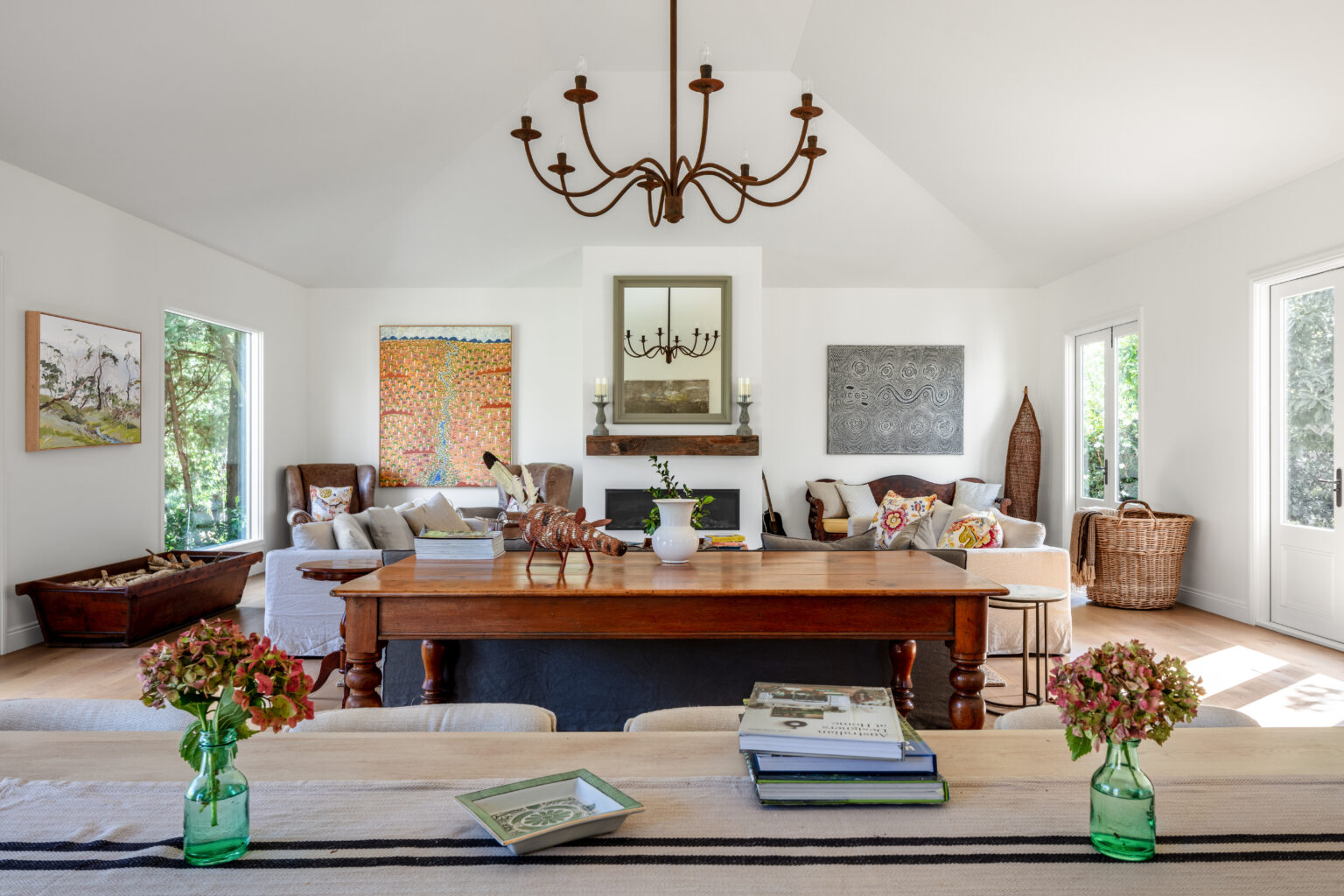
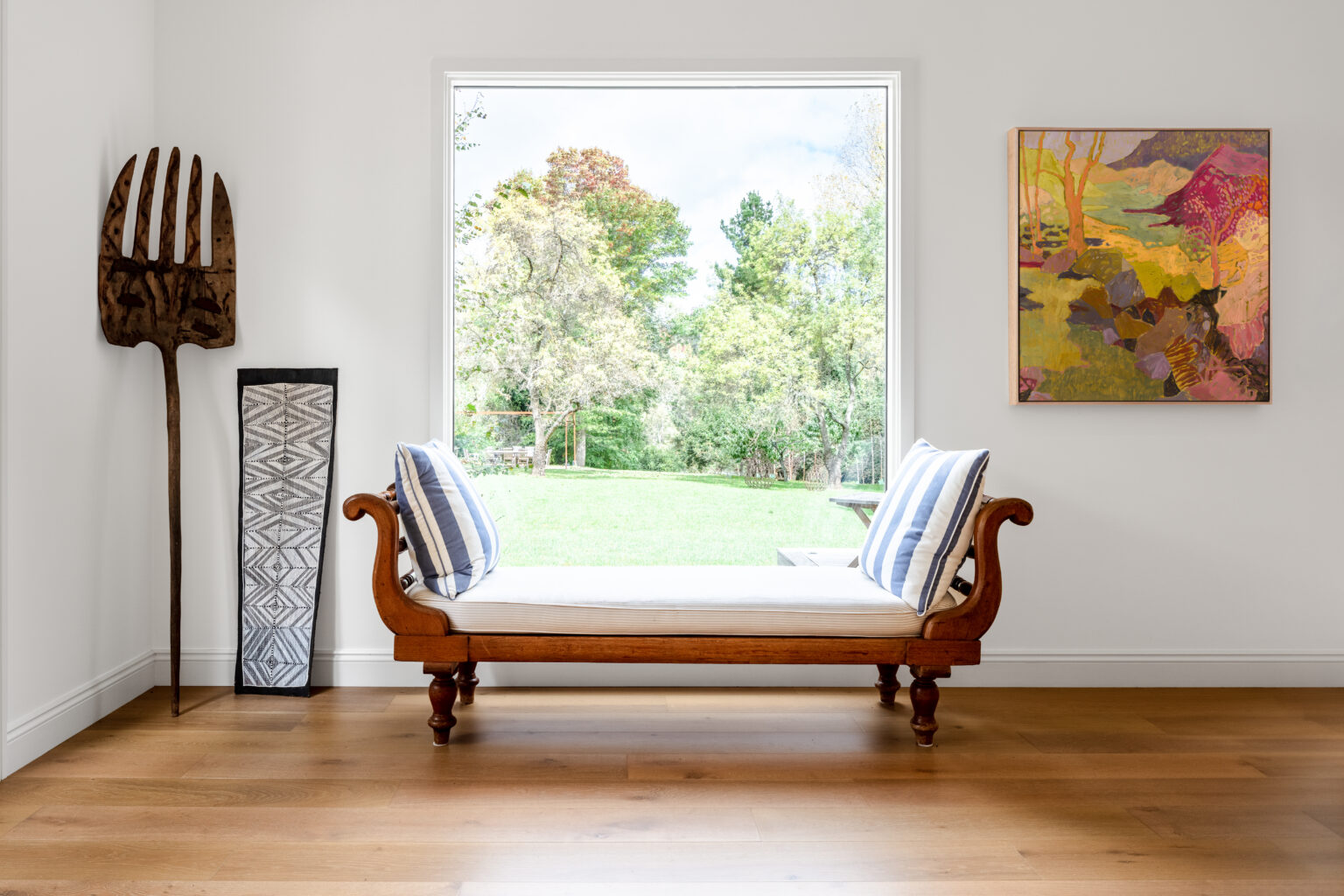
Work by First Nations painters, carvers and weavers sits at the very forefront of this collection. Leaning beside a sleigh-style daybed is a piece by Rosina Gunjarrwanga, adorned with rarrk — abstract crosshatching — and representing the design for the crow totem ancestor known as Djimarr. Today, this ancestral being exists in the form of a rock permanently submerged at the bottom of Kurrurldul Creek, a sacred site south of Maningrida in Arnhem Land (NT).
Hanging between two studded club chairs is a remarkable work by the Artists of Ampilatwatja, created through the hands of three women — Denise Ngwarraye Bonney, Bonita Kemarre Woodman and Darlene Kemarre Woodman — following the strong matriarchal lineage of their community. Ampilatwatja paintings are defined by resplendent fields of colour and intricate dotwork depicting the flowering plants, open blue skies and green plains of their Country, northeast of Alice Springs on the Aherrenge Aboriginal Land Trust.
A distinctive feature of these works is the overhead perspective used to depict plants for Arreth (strong bush medicine), as seen in our available piece by Rosie Kemarre Morton.
Beneath the collaborative Ampilatwatja painting, resting atop a small chest, sits a symmetrically handled vase by Kristy Hussey — a pleasing echo of the balance struck by the paired chairs and patterned cushions.
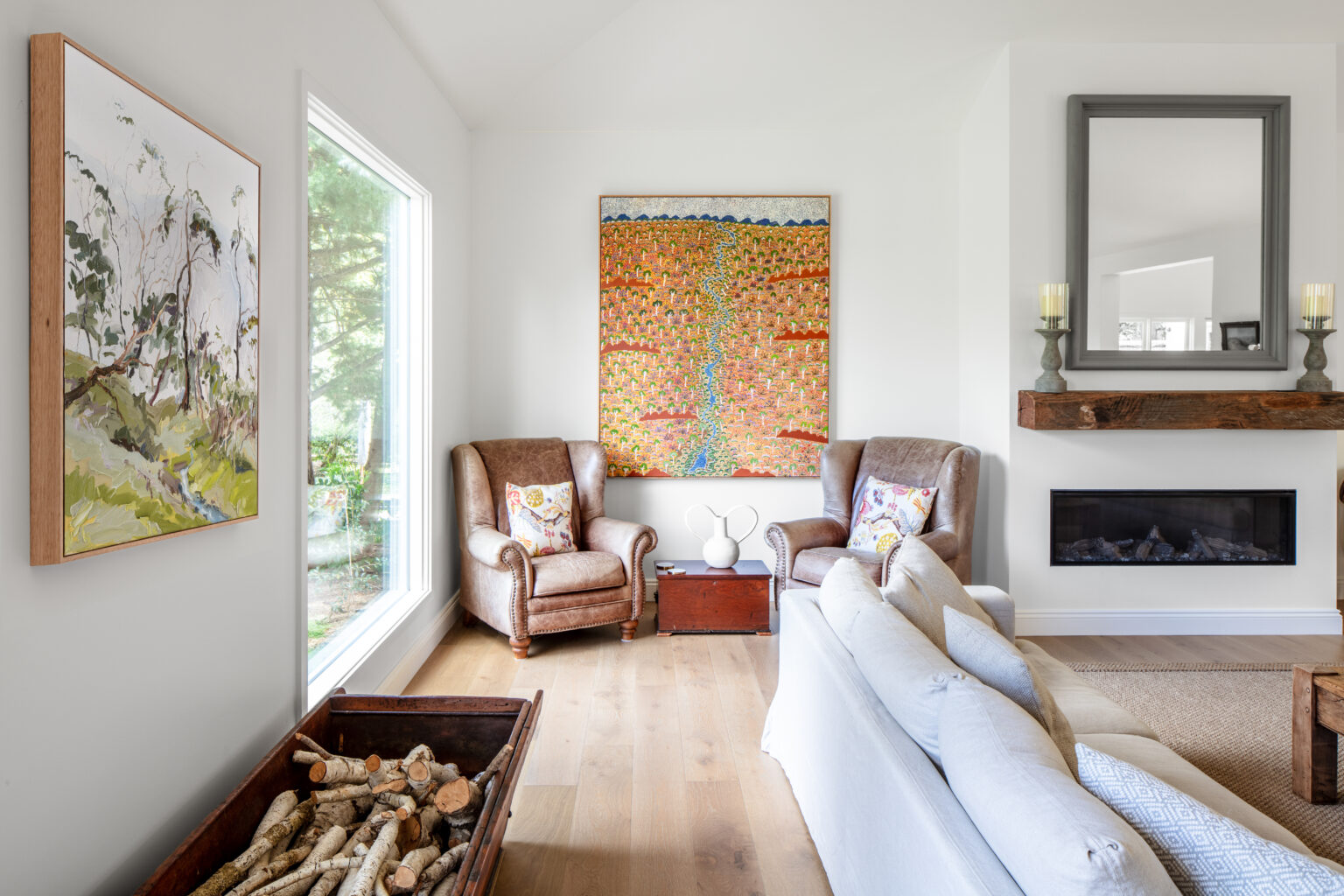
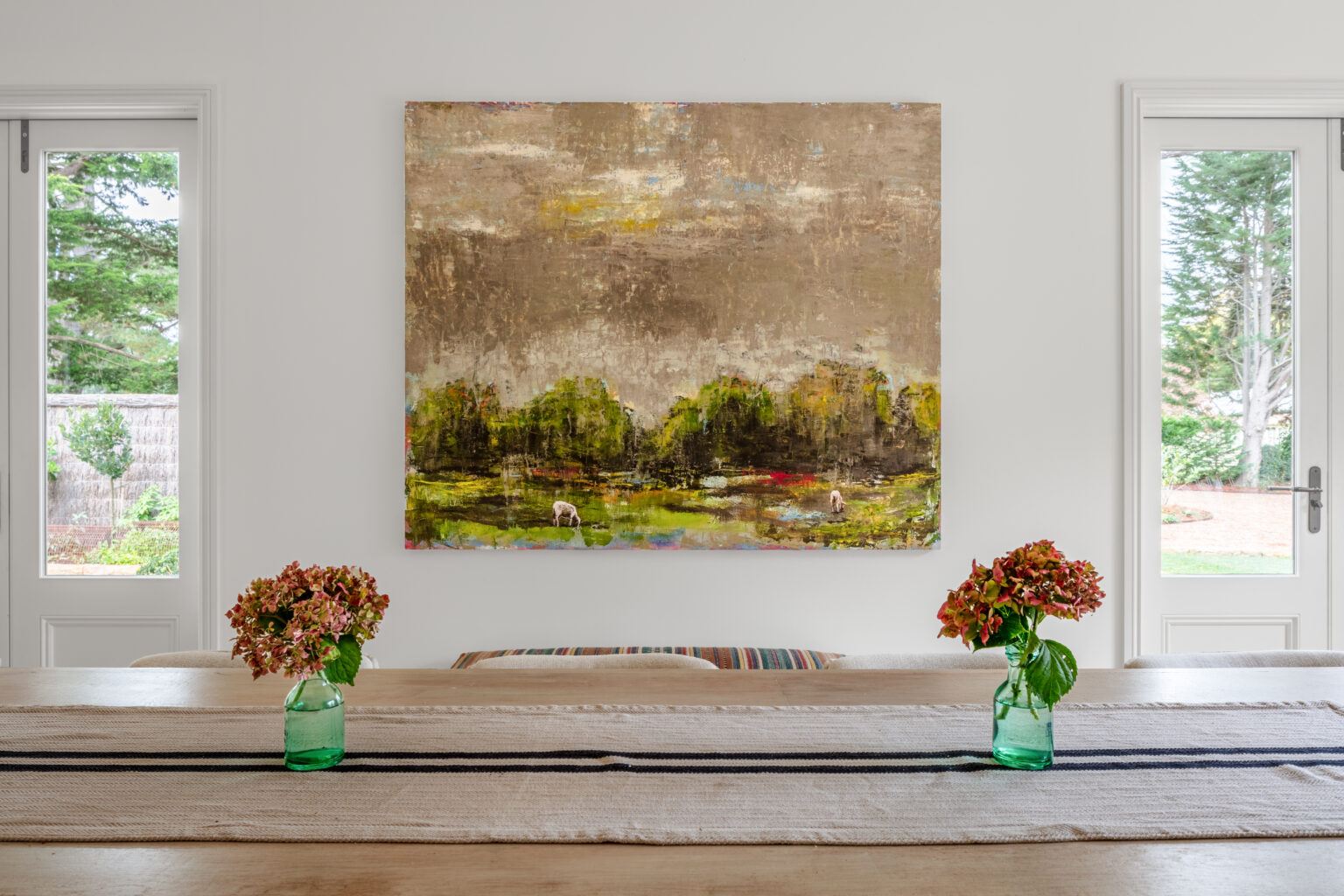
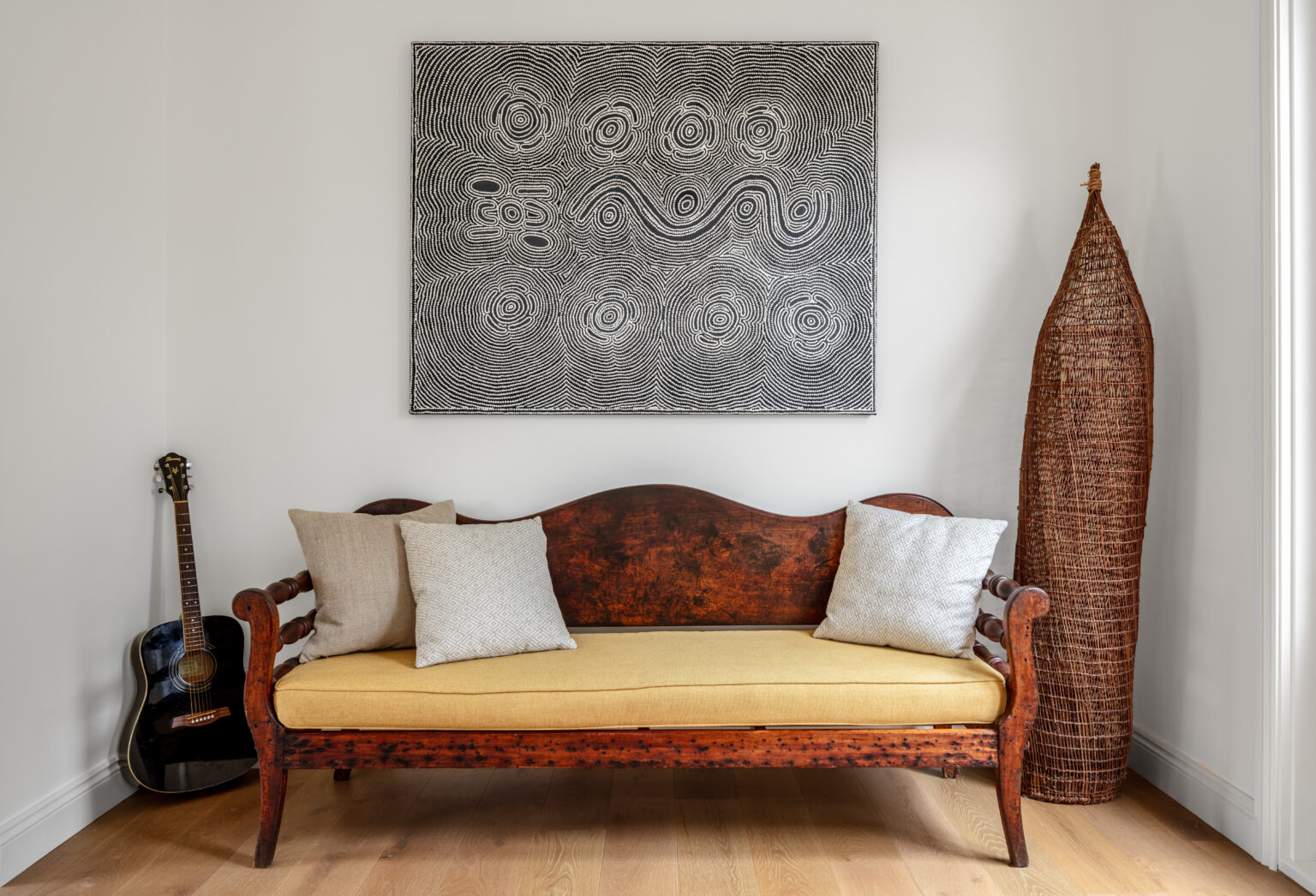
Large south- and west-facing windows in the dining and lounge area open onto an exquisitely maintained garden, drawing the outdoors in and allowing natural light to pool softly across the interior. The garden itself encircles a stand of mature, cold-climate trees that rise protectively above the home.
Sturdiness, simplicity and craftsmanship are clearly prized by these collectors. The robust wooden furnishings — most notably an oversized rustic coffee table fashioned from reclaimed timber — speak to that sensibility. Soft furnishings carry the theme further, with a calming palette of ivories, camels and ochres infused through every corner of the space.
An available painting by Meg Walters, whose latest solo exhibition Space Between Dreams is currently showing in our ground floor gallery at Michael Reid Southern Highlands, brings fresh energy to the living area, joined by one of Julz Beresford’s Snowy Mountains depictions. Below, the tawny hues of a Julianne Ross Allcorn work perfectly complement the rich walnut tones of an antique buffet — her solo exhibition Through an Artist’s Journal is now open in the top floor gallery.
Nearby, an urn form by Kristen Burgham could almost have been lifted from an archaeological site, yet its deliberately intact trim conveys a rawness — something still in the process of becoming. Burgham’s work is held in the permanent collection of the National Gallery of Victoria.
Anchoring the space, a Lucy Vader landscape ties the length of the dining table to the horizon beyond — one grand horizontal meeting another.
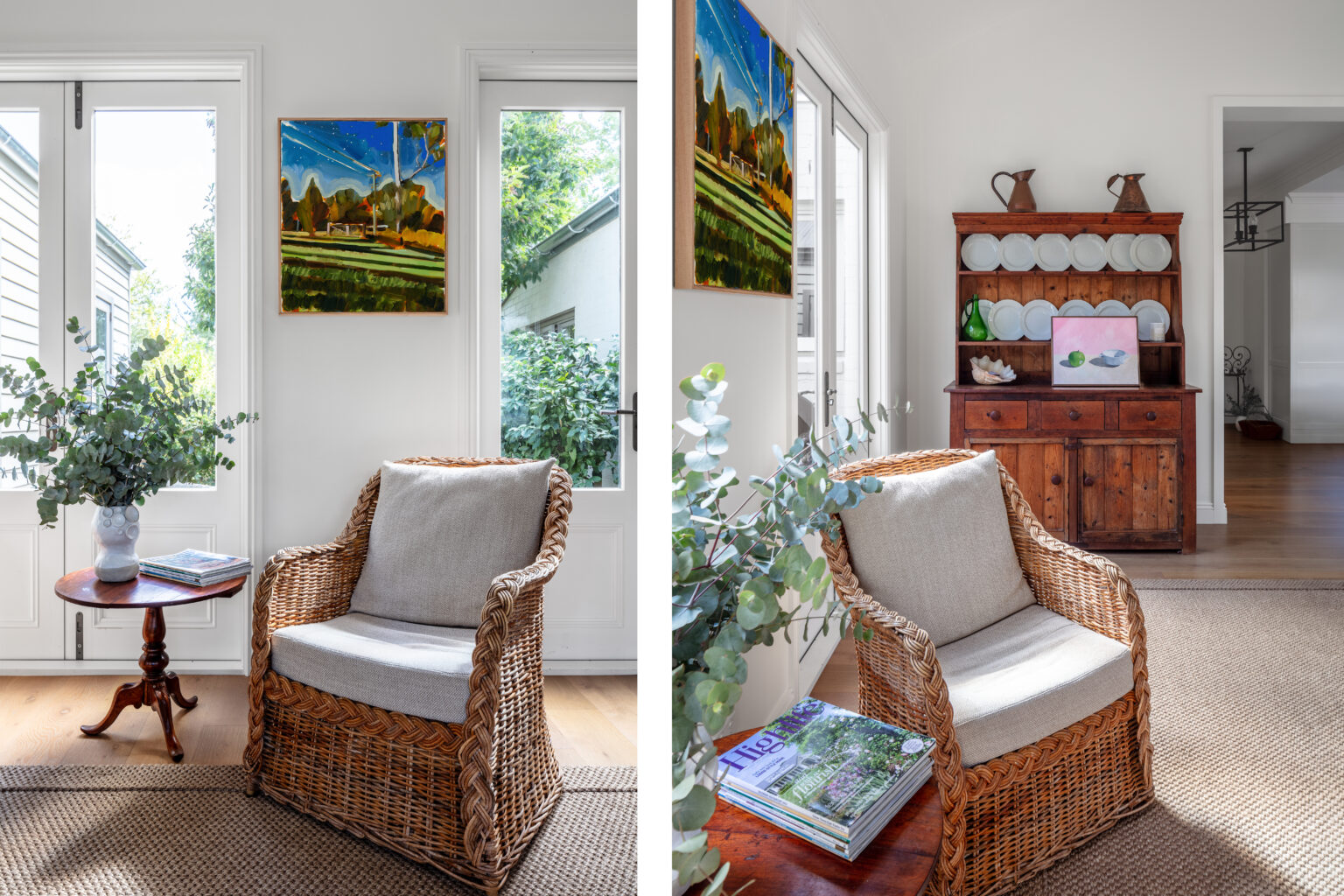
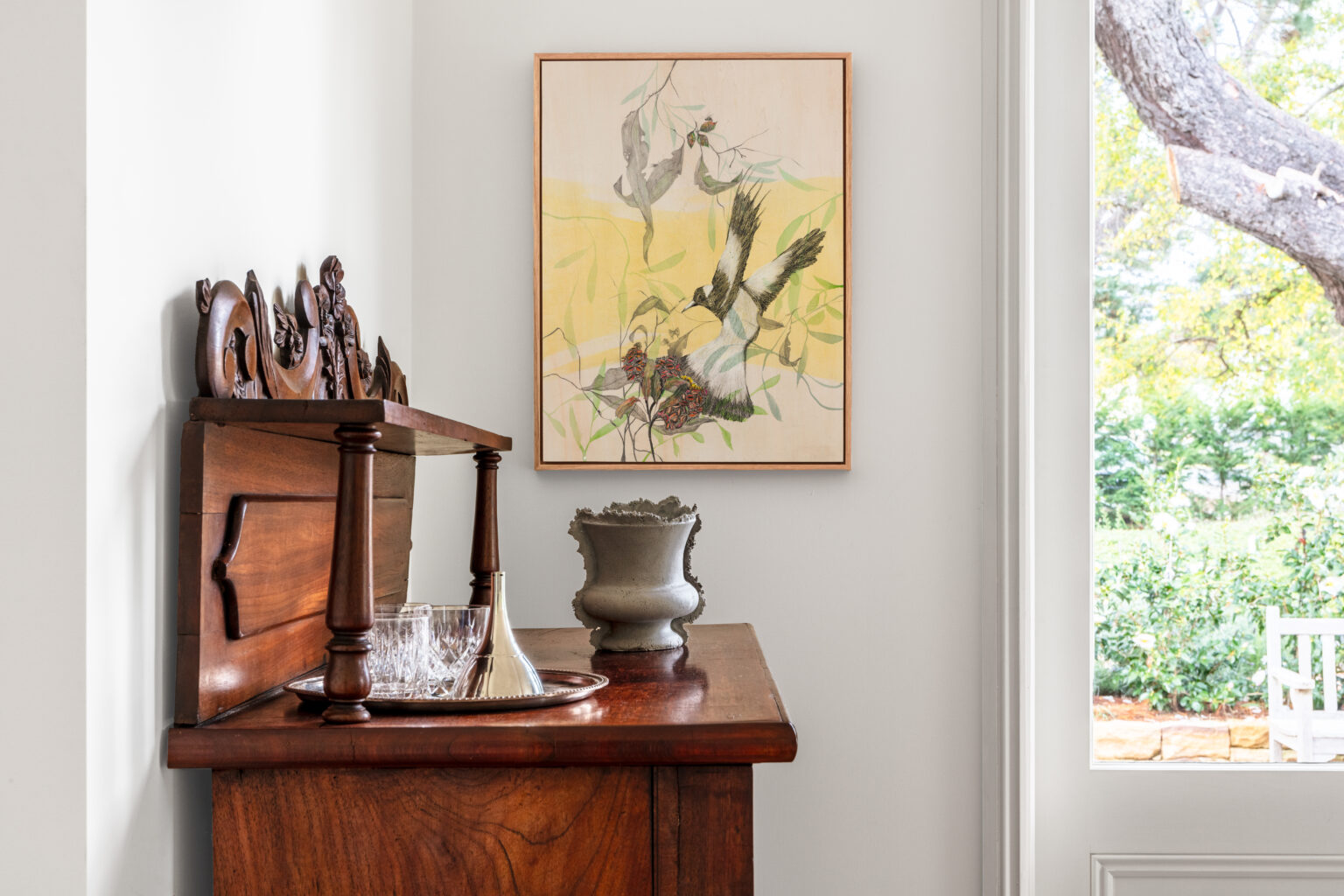
In the adjacent living area, a wicker occasional chair offers the perfect spot to bask in the afternoon sun or leaf through an issue of Highlife magazine.
A commanding antique oak hutch anchors the space, supporting a work by 2023 NEAP Winner Sophie Sachs. Her precise still life, painted on aluminium board, seems to absorb the excess light in the room and cast it back upon her subjects. A quiet kinship forms between an emerald claret jug and a Granny Smith apple.
Above the chair hangs a luminous morning scene by Melanie Waugh, its soft, textural brushmarks laid in thick, quick strokes. Beneath it, eucalyptus leaves burst forth from a vessel by Catherine Field, completing a tableau that feels both composed and alive.
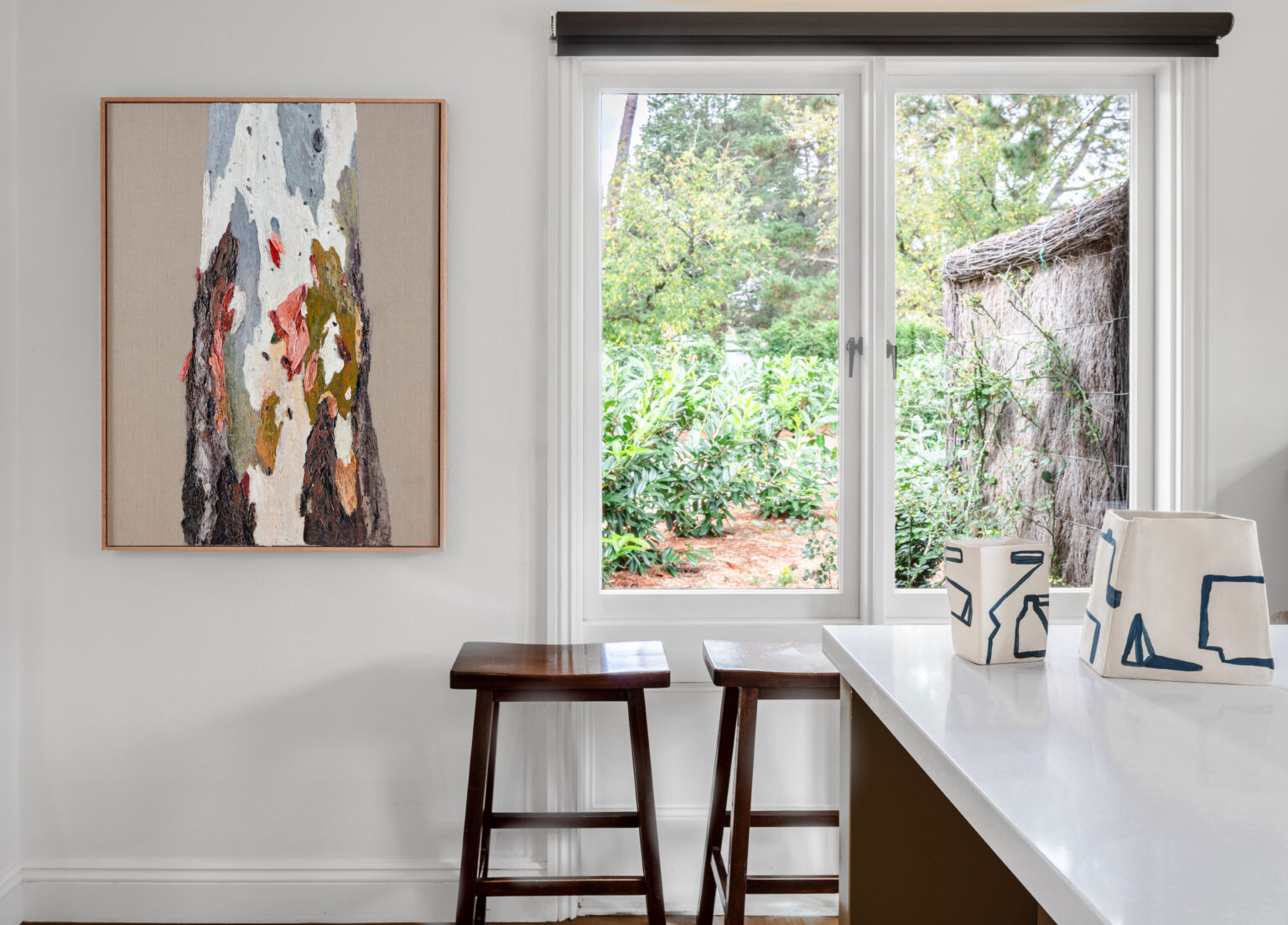
In a home that forbids ostentation and banishes clutter, a pair of elemental vessels by esteemed ceramicist Neridah Stockley is all that’s needed for the kitchen island — and nothing more. Stockley’s compositions unfold across a four-dimensional plane, her gestural mark-making winding rhythmically along each surface.
Echoing the wise old trees that stand just beyond the window frame, a work by Sarah McDonald forms a focal point in the kitchen. First introduced through Art Station at Michael Reid Murrurundi, McDonald captures the textures of bark and lichen in layers of oil impasto that, set against the neutral ground of linen, appear almost astonishingly lifelike.
This collector demonstrates that tight corners and narrow spaces are not to be feared — placing a small still life by Kerri Kerley beside a beautifully refurbished kitchen hutch. Kerley’s work radiates colour and vitality, carrying with it the poignant sense that our past lives remain embedded in the objects we choose to keep close.
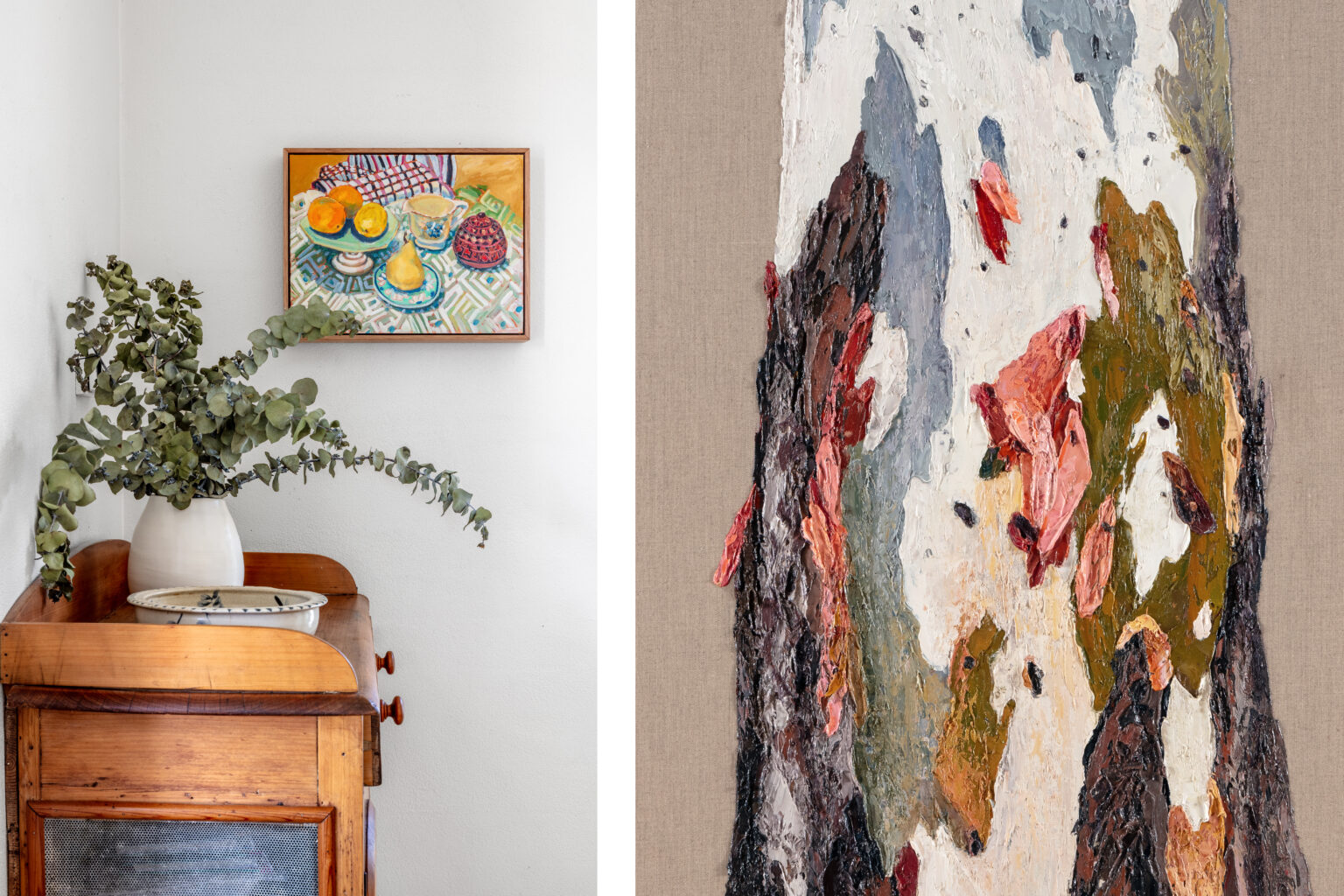
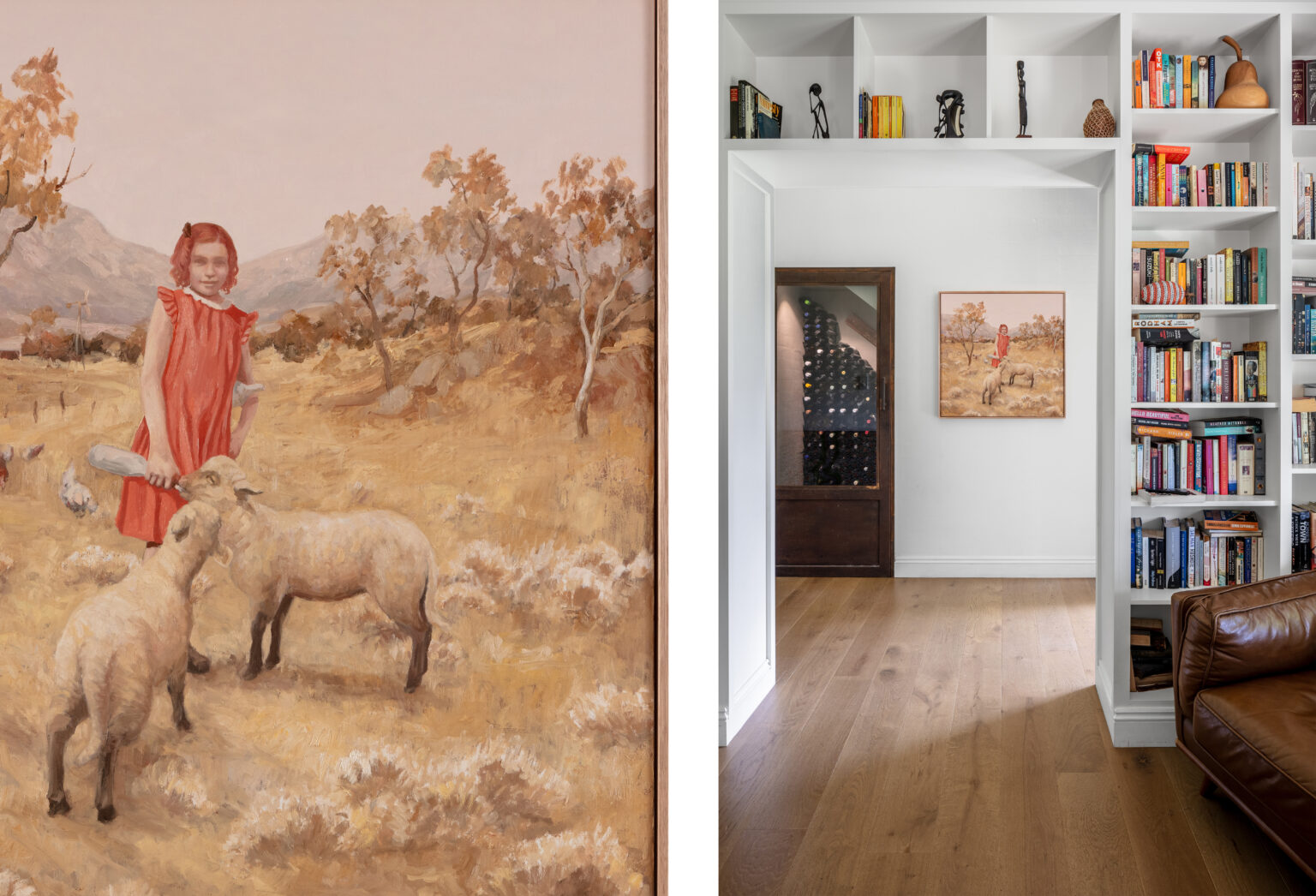
A work by Lori Pensini takes pride of place in the entry hall, framed by the floor-to-ceiling library of the adjoining sitting room. One feels quietly insulated by the vastness of knowledge held on the shelves, an archival sensibility echoed in Pensini’s work, which has the air of a found photograph — slightly bleached and timeworn.
The objects that line the shelves are few but carefully chosen, never allowed to compete with the subtle interplay of book spines — their colours punctuating the room like elegant little marks of syntax.








